When I dug up a machine gunner’s position in the First World War or Civil War (War Cop)
Coping is an interesting occupation. When you go out into the field and start digging, you never know what you will find. And if you start digging for deep signals in the field and drilling for the signal found, more often this leads to the discovery of an old kettle, basin or some other rusty bucket, but not always.
Comrades from Lvov went to dig in one field in their region. We caught the signal and started digging. Parts for a machine gun and ammunition came to light.
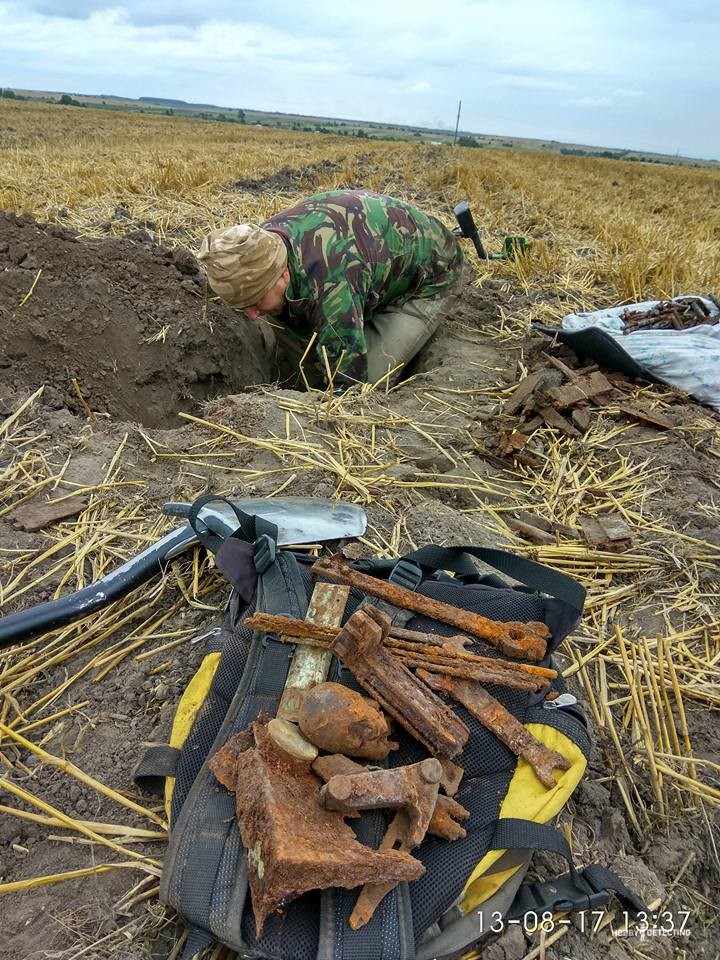 When the dug is neatly folded into a pile.
When the dug is neatly folded into a pile.
 Each machine gun crew of any army has a pencil case – it contains cleaning supplies, spare parts for the machine gun and tools for disassembling/assembling weapons.
Each machine gun crew of any army has a pencil case – it contains cleaning supplies, spare parts for the machine gun and tools for disassembling/assembling weapons.
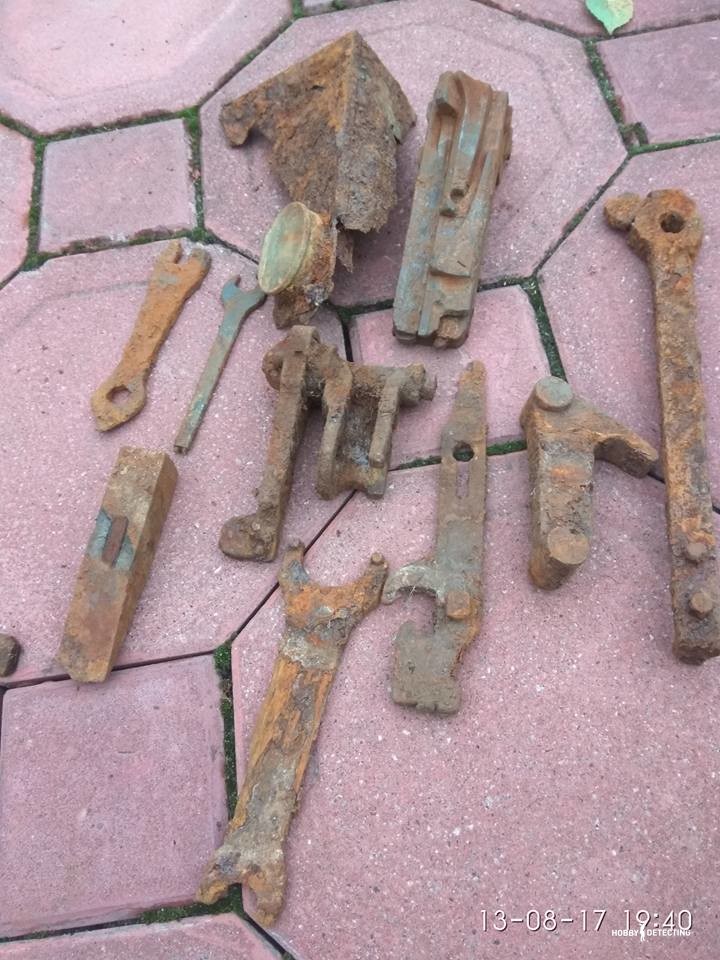 Without such tools, you can simply be left without a working machine gun in the middle of a battle. Very often, a machine gunner’s kit includes a spare barrel, or even more than one.
Without such tools, you can simply be left without a working machine gun in the middle of a battle. Very often, a machine gunner’s kit includes a spare barrel, or even more than one.
 In this case there was no barrel, but there were elements of the bolt group.
In this case there was no barrel, but there were elements of the bolt group.
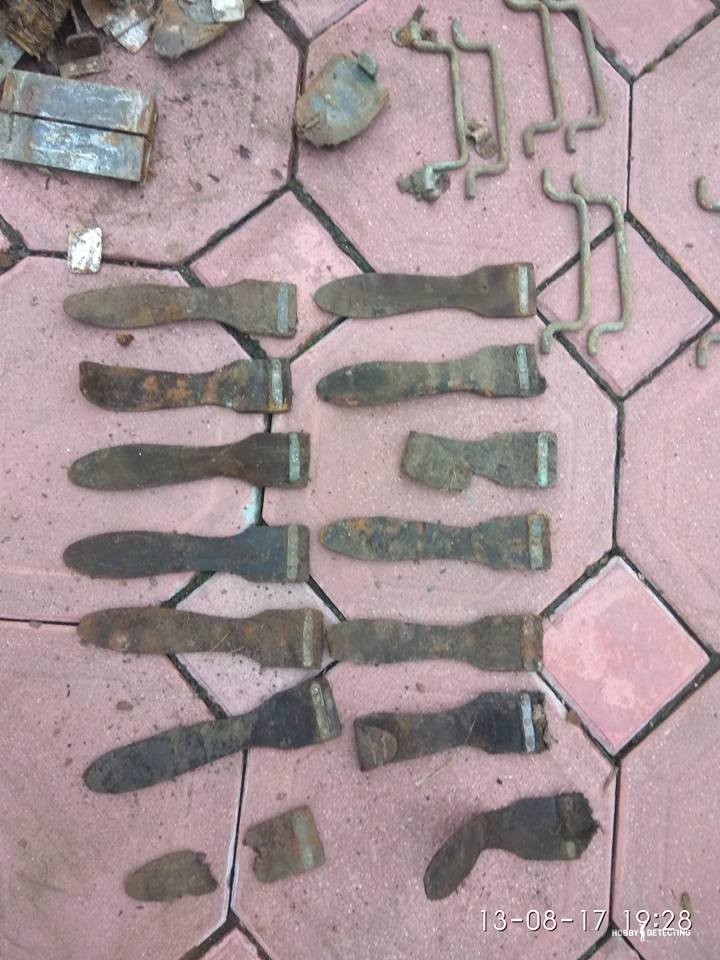 Looks like the remains of a drawer, pencil case and leather carrying hooks?
Looks like the remains of a drawer, pencil case and leather carrying hooks?  Original stamps are present.
Original stamps are present.
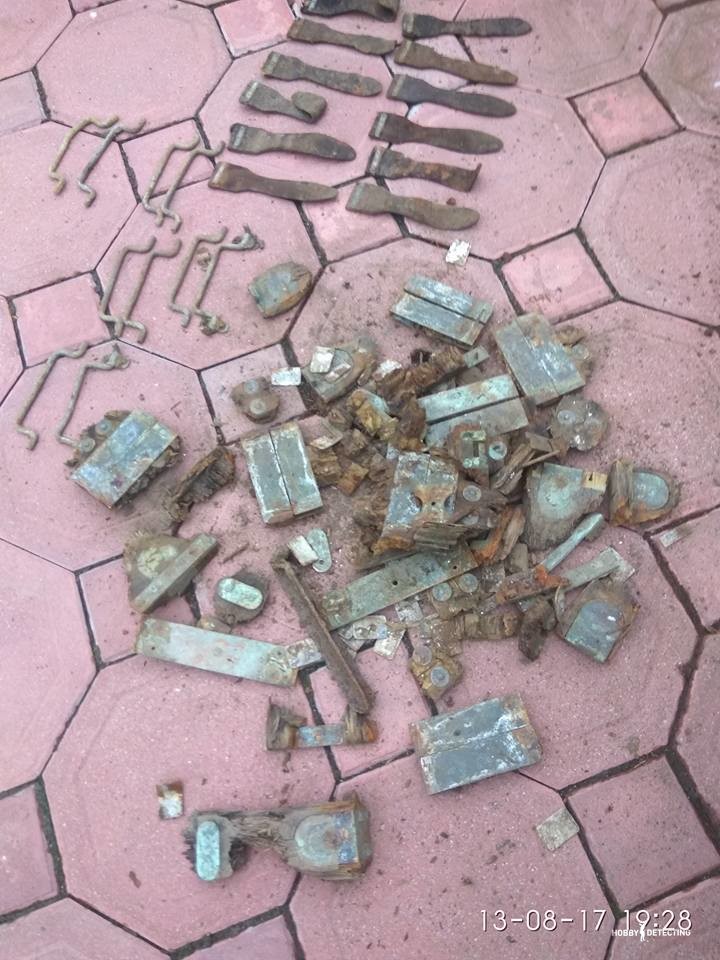 In general, everything can be brought back into more or less proper condition and appearance, if you have direct hands.
In general, everything can be brought back into more or less proper condition and appearance, if you have direct hands.

The cleaning brush is clearly visible – the brush was usually included with any weapon; in the case of a machine gun, the brush was larger (the machine gun crew usually consisted of at least two fighters).
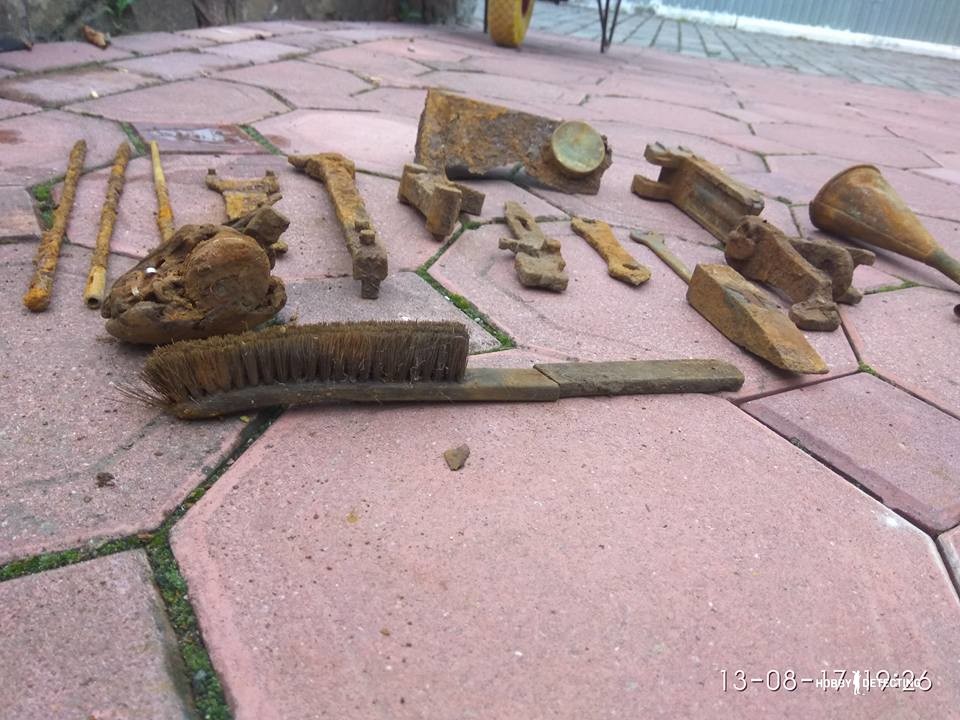 Cleaning rods for cleaning the barrel are also visible.
Cleaning rods for cleaning the barrel are also visible.
 Together with a key for disassembling the machine gun box. There are notches visible in the ramrod – pieces of fabric were fixed in them, which were moistened with oil and then wiped over the barrel. This is how I myself, when I was in the military, cleaned the barrel of an MG-3, a post-war copy of the German MG-42.
Together with a key for disassembling the machine gun box. There are notches visible in the ramrod – pieces of fabric were fixed in them, which were moistened with oil and then wiped over the barrel. This is how I myself, when I was in the military, cleaned the barrel of an MG-3, a post-war copy of the German MG-42.
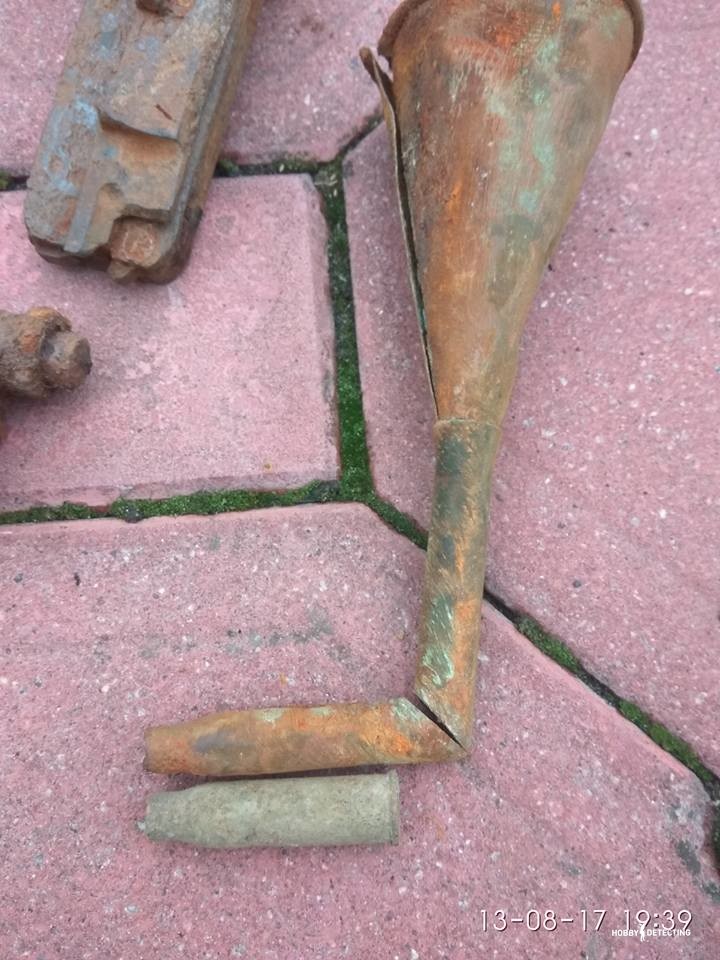 Where would we be without an oil can? Or is this not an oil can, but a device for filling water to cool the barrel? Don't know.
Where would we be without an oil can? Or is this not an oil can, but a device for filling water to cool the barrel? Don't know.
Since it was at the position and they were digging a position, a long time ago unknown machine gun crew safely left ammunition for the machine gun in the position.
 All the beautiful stuff was left lying right in the boxes. The wood rotted over time, and the cartridges lay beautifully in a row and lay underground for more than 100 years in this form.
All the beautiful stuff was left lying right in the boxes. The wood rotted over time, and the cartridges lay beautifully in a row and lay underground for more than 100 years in this form.
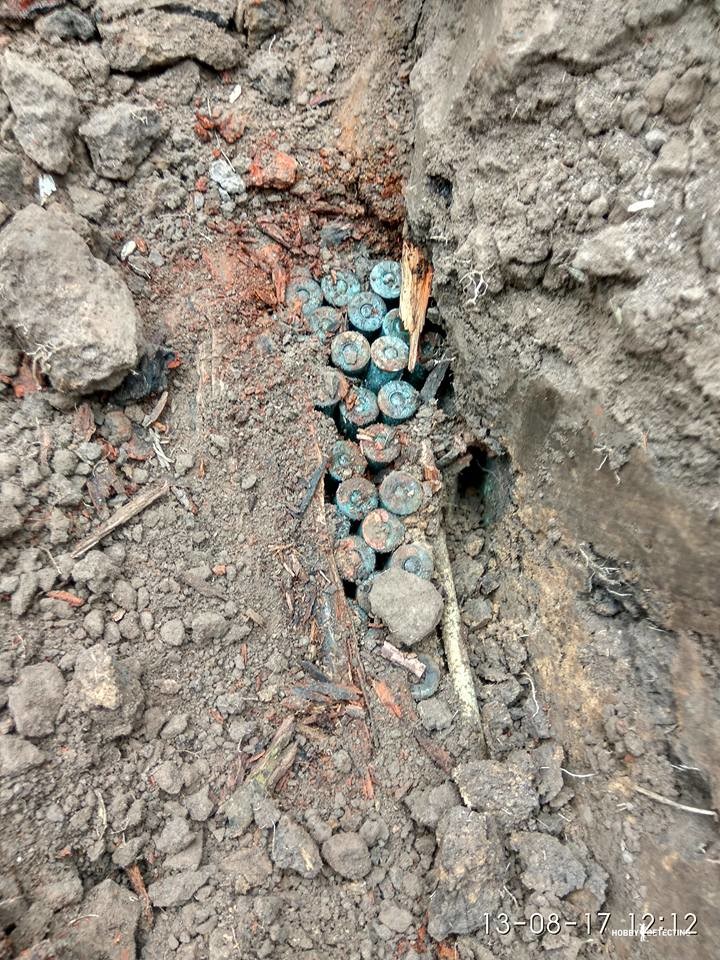 Beautiful Austrian nails. They look like Mosin rifles, but in fact it is an 8×50 mm R Mannlicher cartridge. Austro-Hungarian ammunition, developed back in 1888. By the way, it is still produced in the UK, but for IOF.315 Sporting Rifle rifles.
Beautiful Austrian nails. They look like Mosin rifles, but in fact it is an 8×50 mm R Mannlicher cartridge. Austro-Hungarian ammunition, developed back in 1888. By the way, it is still produced in the UK, but for IOF.315 Sporting Rifle rifles.
 In general, if you look at the stamps, you can easily determine the manufacturer and year of manufacture. This can provide an approximate range for establishing the date of ammunition loss.
In general, if you look at the stamps, you can easily determine the manufacturer and year of manufacture. This can provide an approximate range for establishing the date of ammunition loss.
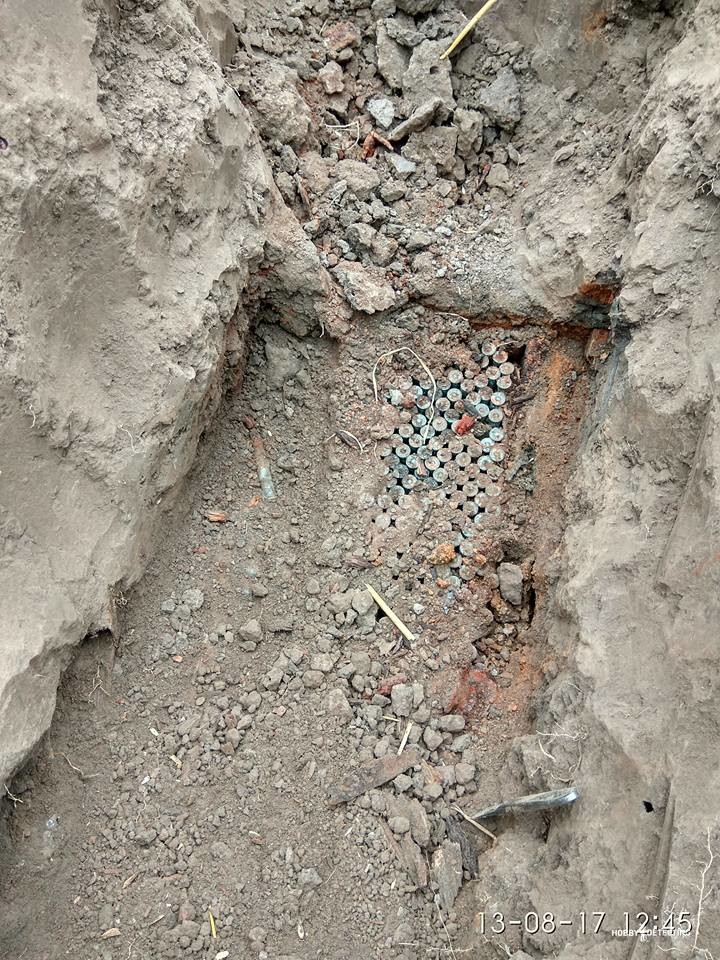 We had to dig a deep hole!
We had to dig a deep hole!
 In addition to the box of ammunition, it is clear that there were also ribbons. The rag tape itself had long since rotted away, leaving only pieces of fabric on the ammunition (oxide from the metal protected the fabric from rotting) and metal parts from the tape.
In addition to the box of ammunition, it is clear that there were also ribbons. The rag tape itself had long since rotted away, leaving only pieces of fabric on the ammunition (oxide from the metal protected the fabric from rotting) and metal parts from the tape.
Judging by the ammunition and parts for the machine gun, the Austro-Hungarian troops left a fair amount of waste on that field in their time. And the machine gun was Schwarzlose, most likely its easel version – Maschinengewehr Patent Schwarzlose M.07/12.
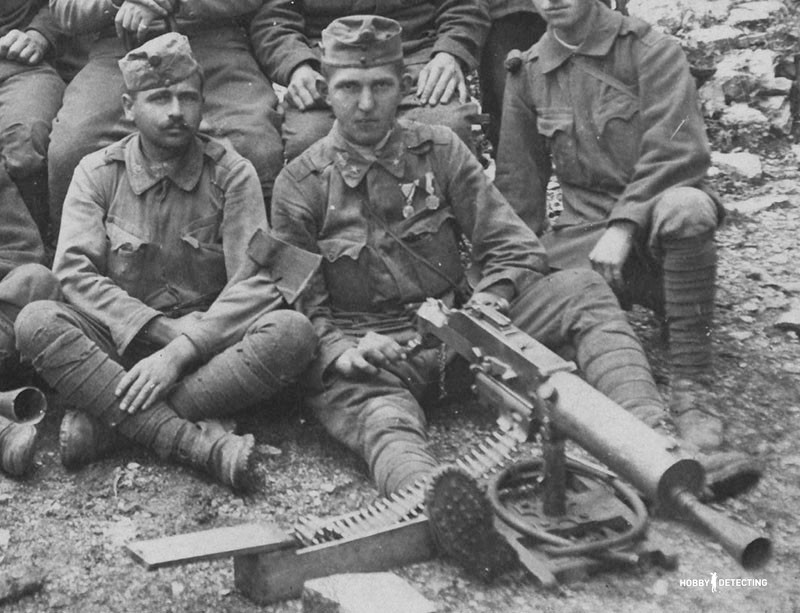 This is roughly what it looked like. Soldiers of the Dual Monarchy next to a machine gun; the wooden box in which the belt with cartridges for the machine gun was stored is clearly visible in the photo. There was a similar box in this case.
This is roughly what it looked like. Soldiers of the Dual Monarchy next to a machine gun; the wooden box in which the belt with cartridges for the machine gun was stored is clearly visible in the photo. There was a similar box in this case.
The Schwarzlose managed to fight in almost all the major conflicts in Europe from 1905 to 1945, since it was in service with almost all the warring European countries for the entire period.
Do you like war cop? Want to see more posts on this topic? We collect everything here ! Send us your photos of your finds too – we’ll publish them!
